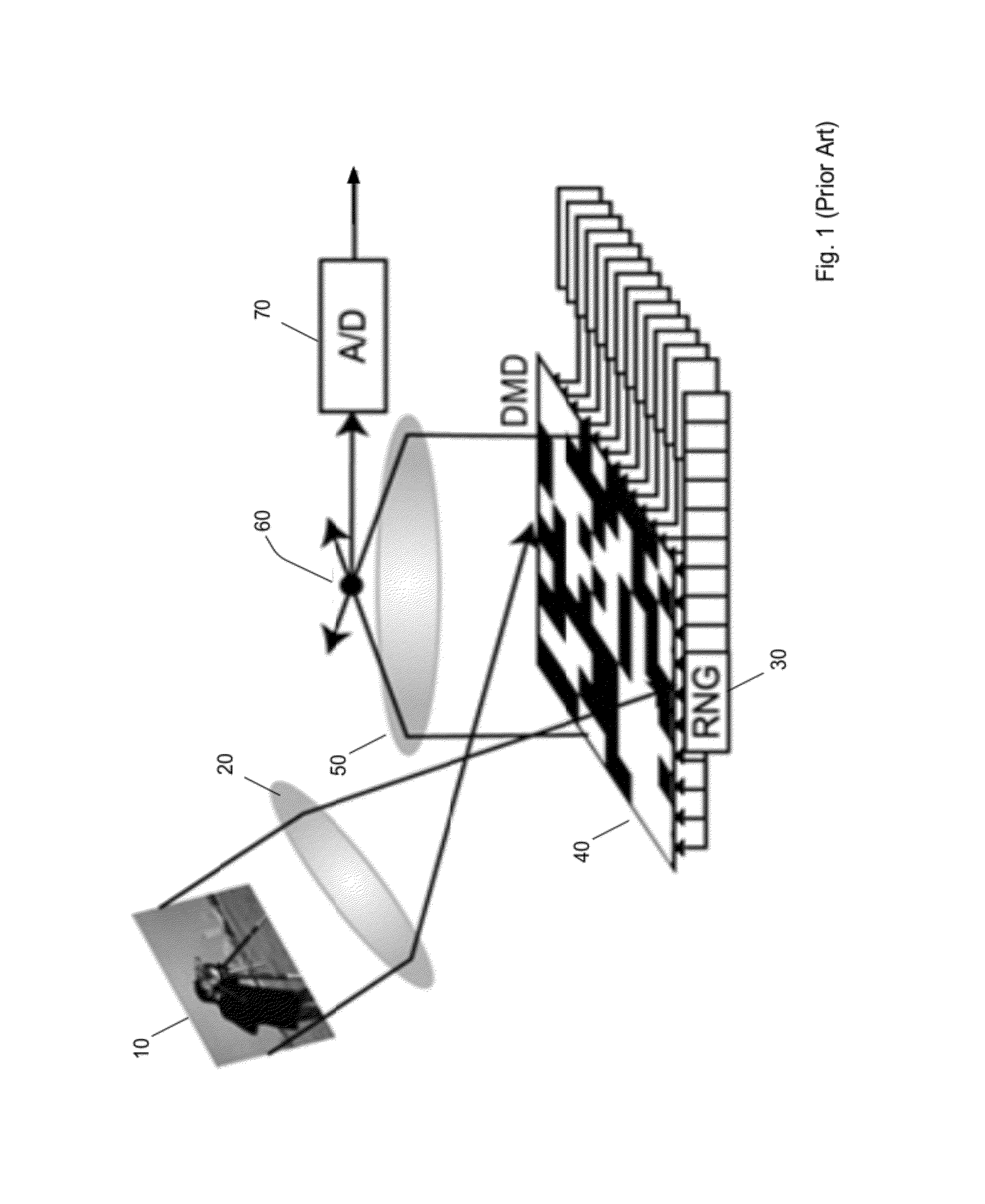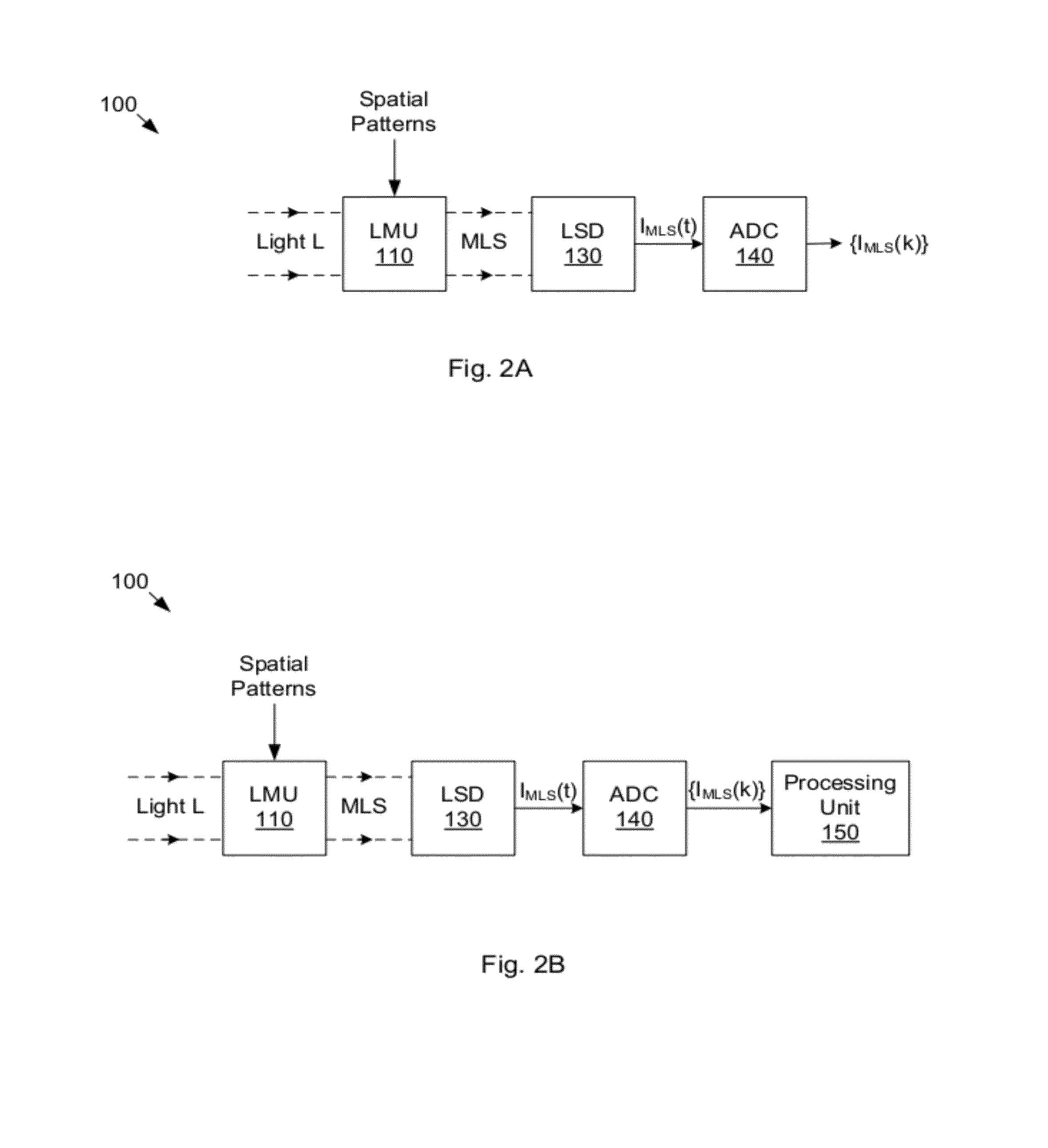Focusing Mechanisms for Compressive Imaging Device
a compression imaging and focusing mechanism technology, applied in the field of compression sensing, can solve the problems of large number of samples generated, affecting image reconstruction quality, and overwhelming data volum
- Summary
- Abstract
- Description
- Claims
- Application Information
AI Technical Summary
Benefits of technology
Problems solved by technology
Method used
Image
Examples
Embodiment Construction
[0079]The following patent applications provide teachings regarding compressive imaging, and each of them is hereby incorporated by reference in its entirety as though fully and completely set forth herein
[0080]U.S. Provisional Application No. 61 / 372,826, filed on Aug. 11, 2010, entitled “Compressive Sensing Systems and Methods”, invented by Richard Baraniuk, Gary Woods, Kevin Kelly, Robert Bridge, Sujoy Chatterjee and Lenore McMackin.
[0081]U.S. Application No. 13 / 193,553, filed on Jul. 28, 2011, entitled “Determining Light Level Variation in Compressive Imaging by Injecting Calibration Patterns into Pattern Sequence”, invented by Richard Baraniuk, Kevin Kelly, Robert Bridge, Sujoy Chatterjee and Lenore McMackin.
[0082]U.S. Application No. 13 / 193,556, filed on Jul. 28, 2011, entitled “Low-Pass Filtering of Compressive Imaging Measurements to Infer Light Level Variation”, invented by Richard Baraniuk, Kevin Kelly, Robert Bridge, Sujoy Chatterjee and Lenore McMackin.
[0083]U.S. Applicat...
PUM
 Login to View More
Login to View More Abstract
Description
Claims
Application Information
 Login to View More
Login to View More - R&D
- Intellectual Property
- Life Sciences
- Materials
- Tech Scout
- Unparalleled Data Quality
- Higher Quality Content
- 60% Fewer Hallucinations
Browse by: Latest US Patents, China's latest patents, Technical Efficacy Thesaurus, Application Domain, Technology Topic, Popular Technical Reports.
© 2025 PatSnap. All rights reserved.Legal|Privacy policy|Modern Slavery Act Transparency Statement|Sitemap|About US| Contact US: help@patsnap.com



